
Royal Enfield Bids Farewell To The Classic 500 With This Sinister...
- Jan 31, 2020
- Views : 12349


“Where are you headed?” The gentleman at the tea shop off NH1 asked me, giving the motorcycle a once over, his interest piqued by the loaded bike and my riding gear. I took off my jacket and gloves, thought for a moment and shrugged. I had no clue where I was going to be by the end of the day.
Earlier that morning, I had set out from Delhi, pointing the bike north, without any specific destination in mind. My Royal Enfield Classic 500 was performing flawlessly, cruising at a steady 100-110kph. The 27.6PS 500cc engine offers that extra grunt needed to make smooth overtakes on the highway as well as maintain consistent high cruising speeds without breaking a sweat.
By the time I pulled over for a break, I had already covered a good 180 kilometres from home. Pondering over possible routes and a destination, it was decided the day’s ride would end where the sun sets. After the tea break and an hour of riding later, I headed east into the hills and in the general direction of Shimla.
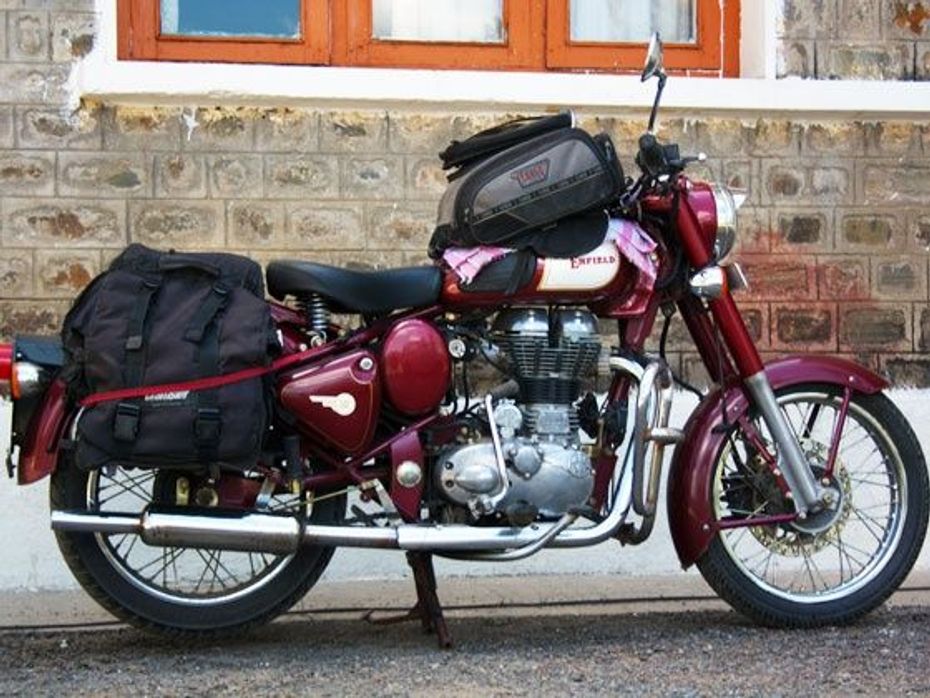
Late evening saw me pulling over at a Himachal Tourism property at the ski resort of Narkanda. The food was good, the bar served my beverage of choice at a very agreeable price and a road map of the state was acquired from the front desk. Poring over the map, my attention was drawn to the words – “Jalori Pass, 3120 m”.
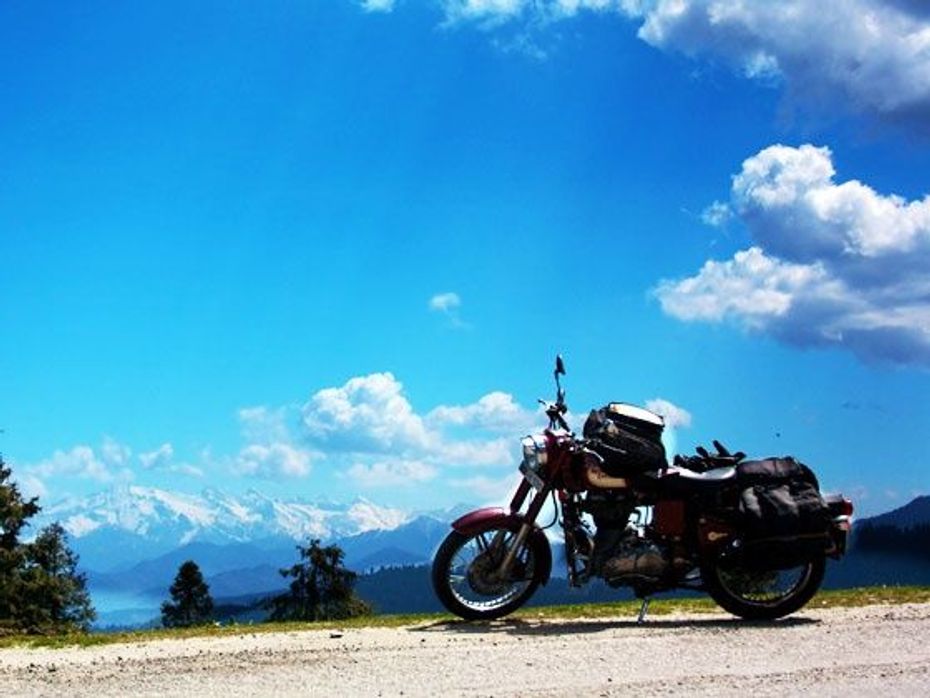
Jalori Pass – the name had often cropped up in conversation with travellers over the years. Jalori Jot, as it’s known in local parlance, isn’t very high as Himalayan passes go. But what it lacks in altitude, it makes up for in attitude. The pass is well known for its steep gradient and in recent years, it has become a popular rally stage for mountain biking enthusiasts as well as the Raid De Himalaya.
So, next morning, I tanked up and headed east from Narkanda and then north across the Sutlej and along one of its tributaries to begin the climb up to Jalori Pass. The motorcycle was tackling the climb with ease, and the 500cc fuel injected engine’s 41.3Nm of torque made the climb even more enjoyable, without the need for frequent downshifting. About five kilometres short of the pass, the road turned into gravel and mud. The stock tyres proved to be totally inadequate on such surface.
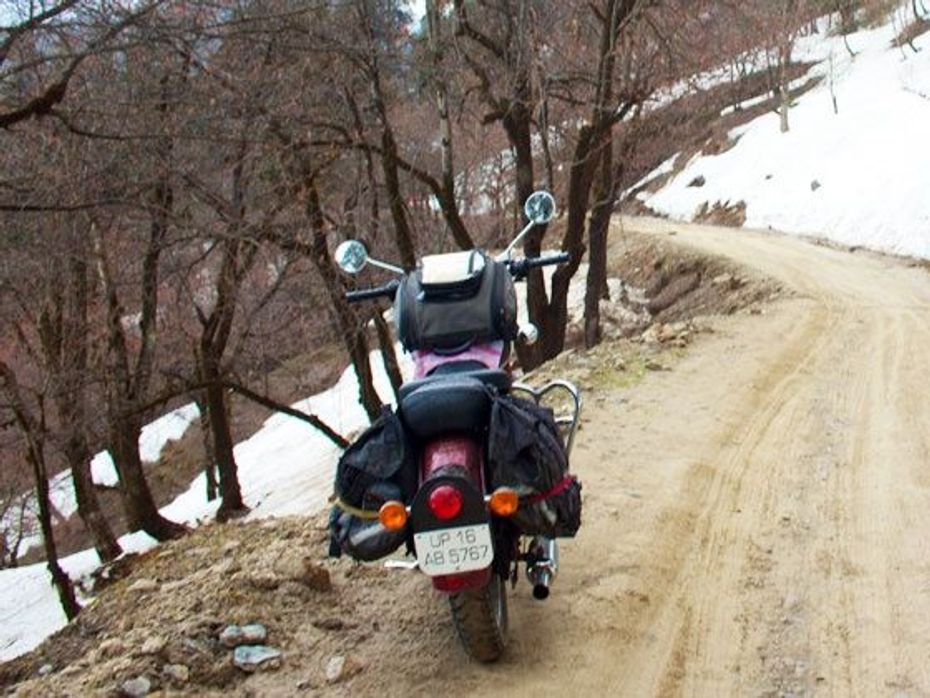
By afternoon I was at the top of the pass, the hillsides still covered with snow. The sun disappeared behind dark clouds and the weather turned grey and menacing. I hoped for some excitement – rain, hail whatever. Rain, I did not encounter, and hail also didn’t make an appearance. What I encountered however, was what at first seemed like rain drops, but soon turned into white frosty flakes of sleet.
The descent on the other side of the pass is indeed steep, and mostly a first gear job. The sun however, was out in the green valley below and it promised to be a pleasurable afternoon ride.
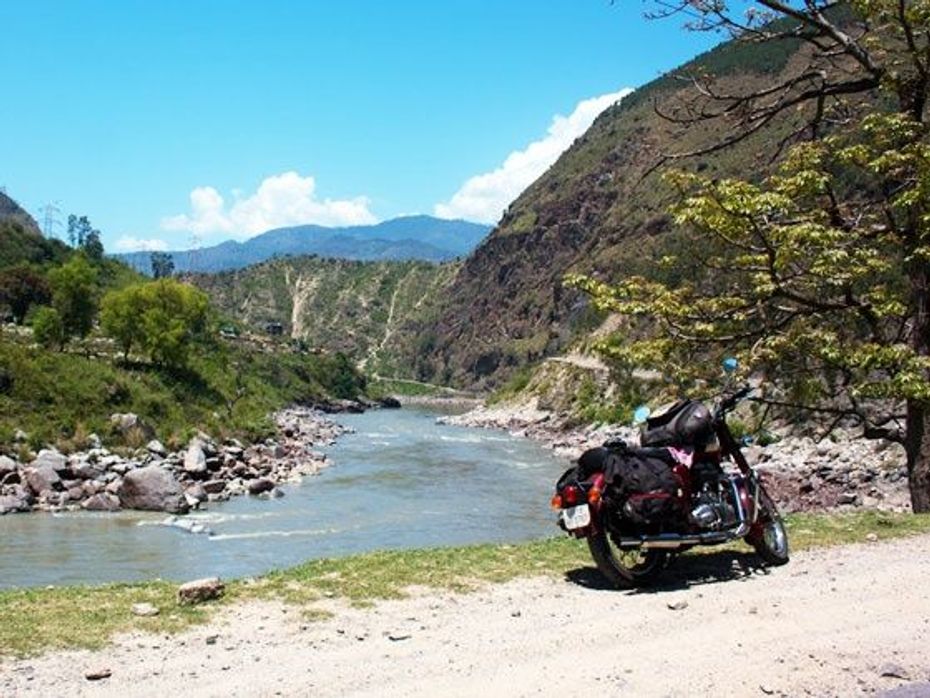
Shoja, Ghiyagi and Jibhi – I had expected these places to be small towns, but they proved to be no more than little villages. The valley was beautiful, green deodar forests on the mountains, a fast flowing mountain spring along the road and wooden cottages right on the riverside. It was afternoon, only past three, and I had over three hours to ride till sundown.
So, I headed down into Tirthan Valley, the land of the Himalayan trout and crossed the town of Banjar and onwards onto NH21 – the Chandigarh-Manali highway. A light rain accompanied me all the way from Kullu and the road surface deteriorated as I approached Manali. Being early in the season, the summer crowds are yet to arrive in this hill town and old Manali village was relatively deserted. I enjoyed the rain and chill over a grilled trout and turned in soon afterwards.
The sun was out the next morning and I hit the high road on the left bank of the Beas River towards Kullu. Traffic was sparse and I made good time crossing Kullu and Aut. The route had been decided – get off the NH and take the state roads through Karsog valley. It proved to be a good decision. Though this “state highway” is only single lane and surface was broken at many places, the views were rewarding.
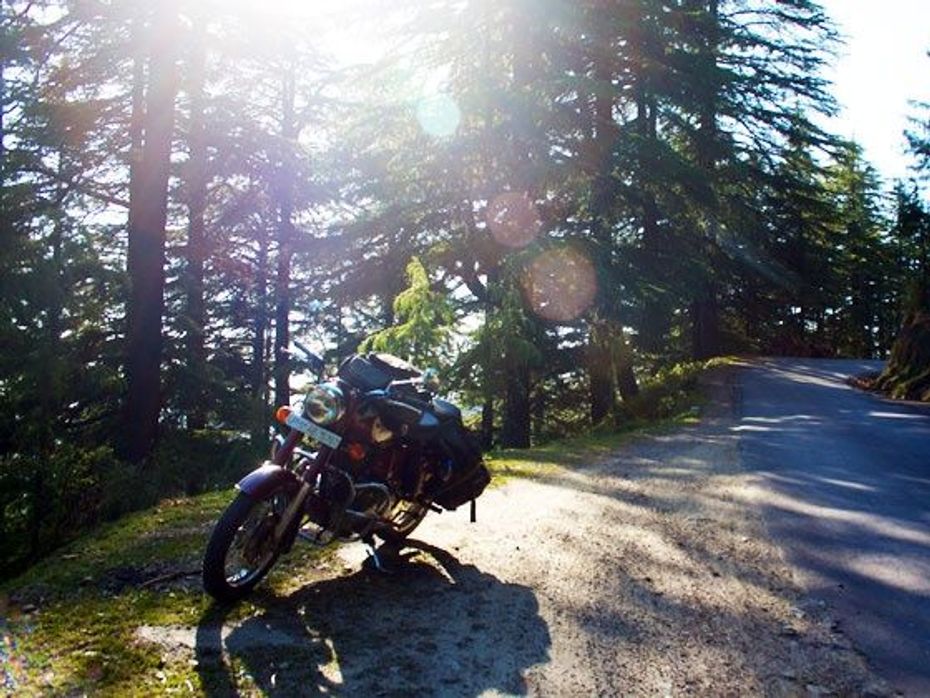
Just before sundown I pulled over at Chindi and decided to spend the night at another HPTDC run hotel. There is no “town” to speak of at Chindi, and if solitude is what one is looking for, this has to be the near perfect place. A glance at the odometer and some calculations from the last tankful to tankful revealed that the motorcycle is averaging about 32 kilometres per litre of fuel.
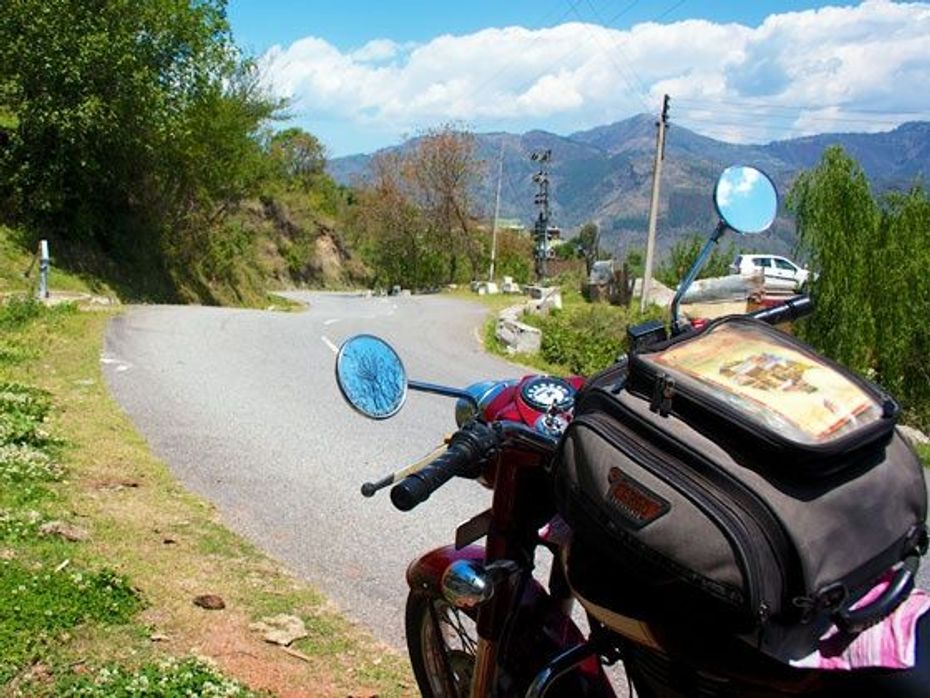
Royal Enfield’s 500cc engine has adequate power, if not outright fast. In any case, it’s not meant or built for speed. Still, vibrations at higher speeds are a letdown, in an otherwise “modern classic” with plenty of character and old world charm.
The last day was a 450 kilometre ride, more than half of it in the plains. In all, it was four days in the saddle and over 1500 kilometres of exploring some off beat places in Himachal. Apart from the vibrations, my Royal Enfield proved once again that it is a capable motorcycle for touring, and I was happy with its performance, both on the highway and on twisty mountain roads.

Royal Enfield Bids Farewell To The Classic 500 With This Sinister...

Royal Enfield Bullet 500, Thunderbird 500 No More?

Royal Enfield 500cc Scrambler Spied; To Be Launched Soon

Is This The New Royal Enfield Classic 650?

Royal Enfield Classic 500 And Classic 350 Get ABS For Select Colour...

Motorcycle News Of The Week: Ducati Updates Scrambler 800, Royal...

Royal Enfield Classic 500 Updated With ABS

OPINION: What Royal Enfield Could Have Done To Avoid The Backlash...

OPINION: Should Classic 500 Pegasus Owners Feel Betrayed By Classic...
 Jawa Perak
Jawa Perak
 TVS Apache RR 310
TVS Apache RR 310
 Bajaj Dominar 400
Bajaj Dominar 400
 Royal Enfield Interceptor 650
Royal Enfield Interceptor 650
 Royal Enfield Continental GT 650
Royal Enfield Continental GT 650
India's largest automotive community
 Royal Enfield Classic 350
Rs. 1.93 Lakh
Royal Enfield Classic 350
Rs. 1.93 Lakh
 Royal Enfield Hunter 350
Rs. 1.49 Lakh
Royal Enfield Hunter 350
Rs. 1.49 Lakh
 Royal Enfield Continental GT 650
Rs. 3.19 Lakh
Royal Enfield Continental GT 650
Rs. 3.19 Lakh
 Royal Enfield Bullet 350
Rs. 1.73 Lakh
Royal Enfield Bullet 350
Rs. 1.73 Lakh
 Royal Enfield Meteor
Rs. 2.05 Lakh
Royal Enfield Meteor
Rs. 2.05 Lakh